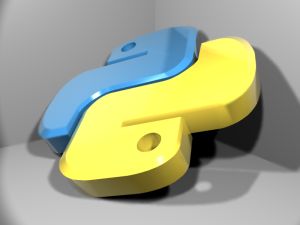 To see a practical application of the iteration protocol, let’s consider the case of the list comprehension. You can use range to change a list as you step across it; e.g.:
To see a practical application of the iteration protocol, let’s consider the case of the list comprehension. You can use range to change a list as you step across it; e.g.:
>>> L = [1, 2, 3, 4, 5] >>> for i in range(len(L)): L[i] += 1 >>> L [2, 3, 4, 5, 6]
This works, but there is an easier way. We can replace the loop with a single expression that produces the desired list:
>>> L = [x + 1 for x in L] >>> L [2, 3, 4, 5, 6]
The final result is the same, but it requires less coding on our part and is substantially faster to boot. The list comprehension is not exactly the same as the for loop statement version in that it makes a new list object.
The list comprehension’s syntax is derived from a construct in set theory notation that applies an operation to each item in set. Alternatively, you can think for it as a backwards for loop.
List comprehensions are written in square brackets because they are ultimately a way to construct a new list. They begin with an arbitrary expression that we make up, which uses a loop variable that we make up (x + 1). That is followed by what you should recognize as the head of the for loop, which names the loop variable, and an iterable object (for x in L).
To run the expression, Python executes an iteration across L inside the interpreter, assigning x to each item in turn, and collects the results of running the items through the expression on the left side. The result list we get back is exactly what the last comprehension says: a new list containing x + 1 for every x in L.
Technically, we do not need list comprehensions, because we can always build up a list of expression results manually with for loops. List comprehensions, however, are more concise to write, and because this code pattern of building up result lists is so common in Python work, they turn out to be very handy in many contexts. Moreover, list comprehensions can run much faster than manual for loop statements because their iterations are performed in C language speed inside the interpreter (rather than with manual Python code). Especially for larger data sets, there is a large performance advantage.

Recent Comments